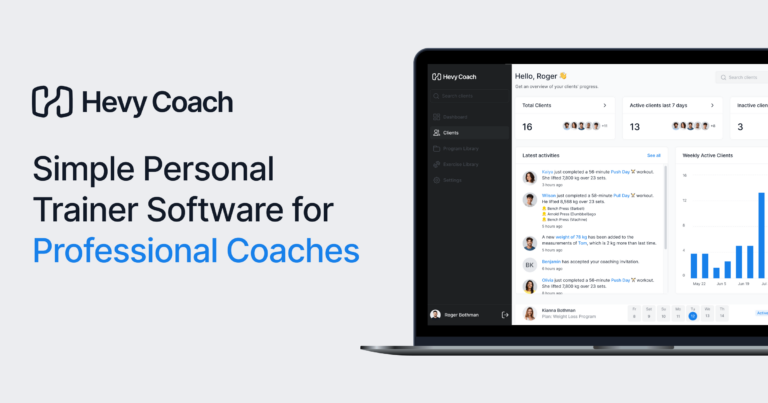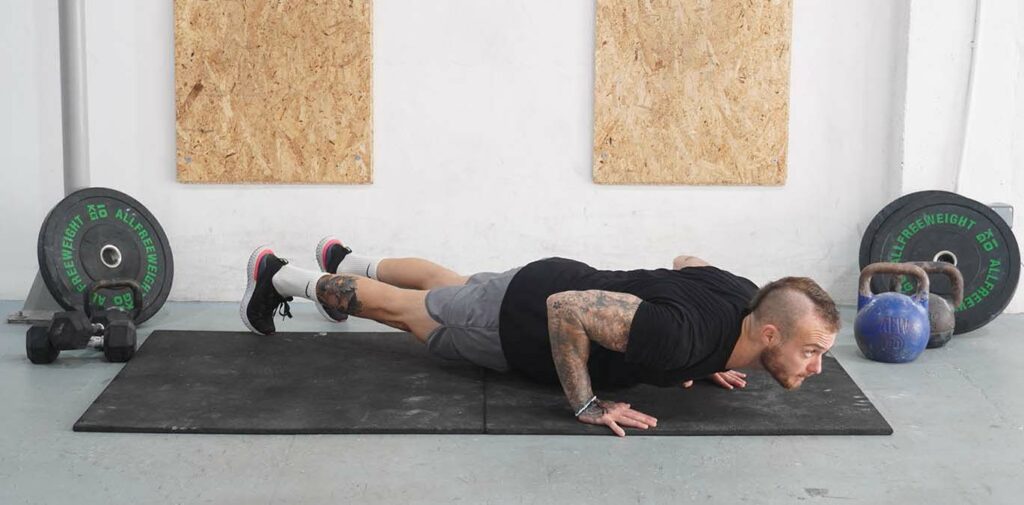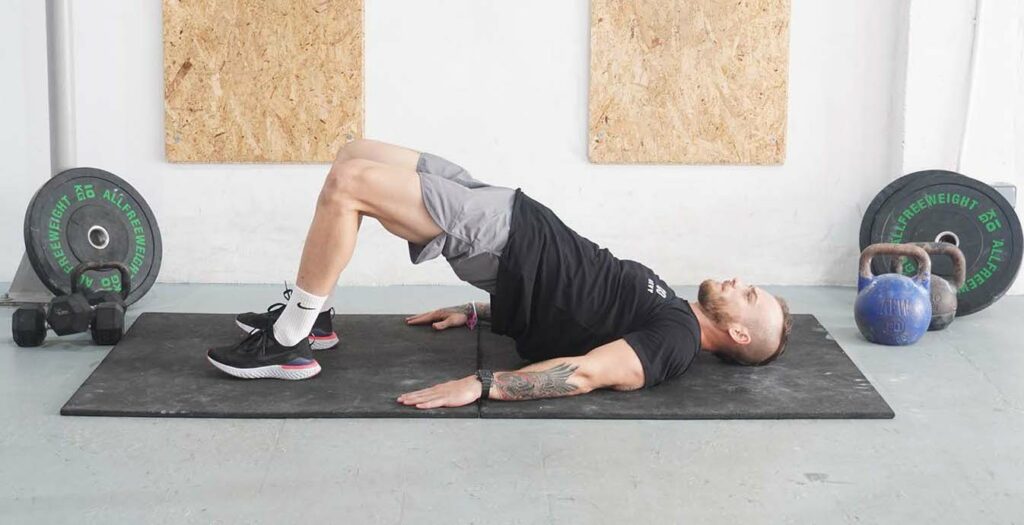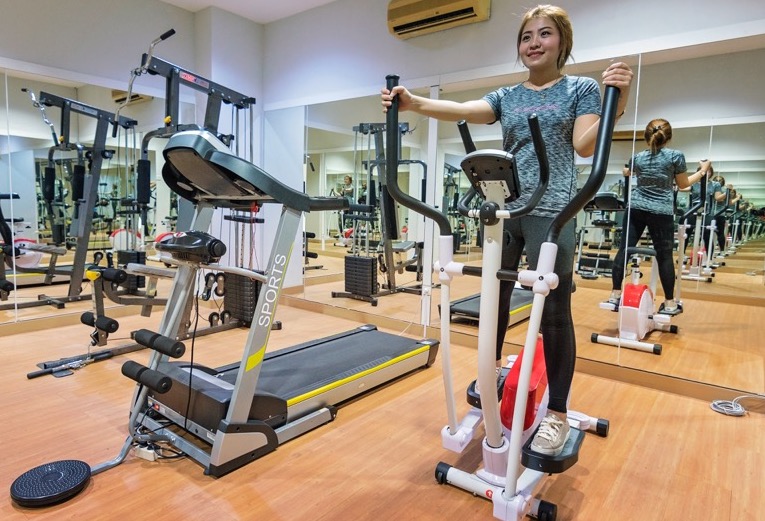An obese person is someone carrying significant amounts of body weight and body fat. A body mass index (BMI) of over 25 is considered overweight, and a score of 30 or more is classified as obese.
There is another level above that called class III obesity, formerly known as morbid obesity. Such individuals have a BMI of 40 or more.
Carrying extra weight and fat puts stress on the body and increases the risk of health complications. The risks are more significant for obese individuals because they have a much higher body fat percentage.
A structured exercise program can significantly improve the health of obese people. Even low-intensity exercises can support weight loss, strengthen muscles and bones, improve insulin sensitivity, and contribute to normalizing hunger and satiety signals.
The issue is that fitness professionals often struggle to develop a sustainable approach that helps overweight clients lose weight.
Read on if you’re struggling with that question and aren’t sure how to train obese clients.
Types of Exercise Modalities for Obese Clients
Aerobic Exercises
Cardio is a highly beneficial form of exercise that strengthens the heart, improves lung capacity, boosts mood, and contributes to well-being (1, 2).
Avoid high-impact exercises and activities like jogging because these can do more harm than good for someone carrying 50, 75, or even 100+ pounds of extra weight.
Instead, choose less intense and more sparing activities, such as the following:
1. Walking
Walking is arguably the best way to train obese clients (3). The activity is manageable and highly beneficial.

Even if the client can only walk for a minute or two before getting tired, they have a physical fitness foundation you can use to help them. Unlike jogging, walking puts much less stress on the joints and doesn’t feel nearly as demanding.
You can get your clients started on a treadmill.
2. Cycling
Cycling is another beginner-friendly form of cardiovascular exercise you can prescribe to your heavier clients.
Performing the activity from a seated position reduces joint stress and provides a non-threatening way to train clients.
The advantage here is that obese people can train at a slightly higher pace and complete a productive workout in as little as 10 to 20 minutes.
It is best to start on a stationary or recumbent bike.

Try Hevy Coach
Intuitive personal trainer software, with a world class experience for your clients.
30 day free trial, no credit card required
3. Swimming
Swimming is a more complex activity that won’t work for everyone in every situation.
Not everyone knows how to swim, overweight clients might not feel comfortable in a swimsuit, and it might be tricky to get regular access to a pool.
Still, if swimming is possible and practical, your client can benefit greatly. The activity trains the entire body, burns many calories, and places little to no stress on the joints (4).
Swimming is also fun; there are many ways to make sessions more challenging. Water aerobics can also be an option.
Strength Training
Strength training is another form of exercise that can work well, even for an overweight client with little to no fitness experience.
All forms of resistance training strengthen the entire body, improve bone mineral density, and promote insulin sensitivity (5, 6).
Plus, regardless of where your client starts, there are activities they can perform and build upon to gain muscle and shed body fat.
1. Bodyweight Exercises
Bodyweight exercise is highly beneficial for overweight people to dip their toes into fitness.
There are plenty of activities to pick from and countless ways to modify each movement and workout to fit their needs and preferences.
In fact, your client can start with home training if they feel anxious to visit a gym. They can send you training videos, and you can provide feedback for them to improve. Hevy Coach is a training platform to track your clients closely, examine their progress, and make changes to their workouts.
a) Squats
Squats are a fantastic health and fitness activity for people of all levels. If the bodyweight version is too challenging for obese individuals, they can perform modified squats.
One option is for your client can hold onto something while squatting.
b) Push-Ups
The push-up is a simple and incredibly effective exercise you can modify for an overweight or obese beginner.

For example, you can have your client perform the movement on their knees. If that’s too challenging, have them do wall push-ups instead.
c) Lateral Leg Raises
Lateral leg raises are an exercise you can use when training obese clients. The movement is low-impact and doesn’t require much strength.
d) Low Step-Up
Step-ups are an effective unilateral exercise for developing the quadriceps. For example, you can have your clients do low step-ups on an object only a few inches tall.
e) Glute Bridges
Glute bridges are an exercise every personal trainer should teach clients. When done correctly, they develop the posterior chain and contribute to core strength.

2. Resistance Band Exercises
Resistance bands are a fantastic workout tool your client can use to expand their pool of available exercises, train all major muscle groups, and build a solid fitness foundation.
Band exercises often take time to learn, so it would be best to guide your obese client in person.
Like free weights, bands allow clients to adjust the resistance and do numerous isolation and compound exercises: bicep curls, overhead presses, bent-over rows, etc.
You can combine banded and bodyweight activities into the same training program to keep things fresh and engaging.
a) Bicep Curls
As a personal trainer or coach, you’ve probably taught the bicep curl before. The process won’t be that different for an obese client.
b) Tricep Extensions
There are numerous tricep extension variations you can teach to a beginner. One option is to anchor the band overhead for your client to do extensions as they would on a cable machine.
c) Lat Pulldowns
Band lat pulldowns are an effective exercise for teaching new trainees how to engage their lats better.
Developing a good mind-muscle connection right from the start can help them train their back muscles more effectively in the long run.
d) Chest Press
The banded chest press is a neat alternative to push-ups. One advantage is that you can adjust the resistance for your client by picking the appropriate band that provides just enough tension.
e) Clamshells
Beginners could start with bodyweight clamshells, but the exercise won’t provide much of a challenge.
One way to make the movement slightly more difficult is to wrap a looped band over your client’s thighs and have them do clamshells.
Other exercises clients can do with bands include:
- Shoulder presses
- Lateral raises
- Chest flyes
- Banded squats
3. Gym Activities
It’s no secret that gym training offers advantages. It helps people shed excess weight and build muscle through various resistance and aerobic exercises.
The gym also provides more opportunities for training obese clients with free-weight, machine, and bodyweight movements.
The following are some of the best gym activities for obese folks. We won’t dive into these because teaching them to obese folks isn’t that different. Be patient, examine your client’s technique, and provide feedback when necessary.
Dumbbell Movements
- Bicep curls (regular and hammer curls)
- Tricep extensions (seated and standing)
- Chest presses (lying flat and at an incline)
- Shoulder presses (seated and standing)
- Romanian deadlifts (with limited range of motion)
- Lateral raises (seated and standing)
- Bent-over rows
- Tricep kickbacks
Cable Activities
- Lat pulldowns (wide/narrow grip, overhand/underhand)
- Tricep pushdowns (with a rope, handle, or straight bar)
- Bicep curls (regular, single-arm, crucifix, hammer curls, etc.)
- Seated cable rows
- Standing glute kicks
- Face pulls
- Lateral raises
- Pull-throughs (with limited range of motion)
- Shrugs
Exercise Machines

- Treadmill – start with slow walking and gradually increase the pace; adjust the incline by a few degrees to increase the challenge
- Elliptical – a fantastic low-impact activity that trains the upper and lower body
- Stationary/recumbent bike – both options provide a good workout and train the quadriceps without placing much stress on the joints
- Rowing machine – fantastic for low-impact training; it works the upper and lower body, burning more calories

Try Hevy Coach
Intuitive personal trainer software, with a world class experience for your clients.
30 day free trial, no credit card required
Stretching and Flexibility Exercises for Overweight Clients
Overweight and obese people often struggle with mobility due to years of physical inactivity (7). So, in addition to cardio and strength training, you should prescribe some stretching activities.
Doing so will lead to good posture, reduce the risk of aches, and allow your clients to perform activities through a more extended range of motion.
1. Yoga
Yoga is a discipline that combines stretching with strength and balance activities, leading to better mobility, core strength, and a range of health benefits (8).

The great thing about yoga is that there are plenty of activities, even for newbies. Beneficial activities include:
- Child’s pose (Balasana)
- Supported bridge pose (Setu Bandha Sarvangasana)
- Supine twist (Supta Matsyendrasana)
- Cat/cow (Chakravakasana)
2. Pilates
Pilates is another discipline that combines mobility, strength, and endurance to help people of all fitness levels develop a solid foundation, move more freely, and feel better (9).
Overweight and obese people can take full advantage of pilates to raise their heart rate, expend energy, improve their stability, and work on whole-body muscle coordination.
Here are some endurance/resistance exercises:
- Crunches
- Lying knee raises
- Knee plank
- Swan prep
- Single-leg circles
- Mermaid stretch
How Fitness Professionals Can Choose the Right Activities
1. Consideration of Medical Conditions
Training healthy clients is one thing, but you have to be more careful with your approach when working with obese individuals. Serious medical conditions like hypertension (high blood pressure), coronary heart disease, and type 2 diabetes play a considerable role.
You must ask your clients to be upfront with you and modify their training approach accordingly.
2. Goals and Preferences
You’re probably already aware of the importance of considering your clients’ goals and preferences. The more your clients enjoy their training, the more likely they are to stay consistent, work hard, and reach their goals.
The best exercises for morbidly obese clients are those they enjoy doing.

3. Safety
Picking the right personal training exercises for obese clients will inevitably be a learning experience, as no two people are the same. For example, one individual might be strong enough to do goblet squats, whereas another could struggle to climb a flight of stairs (7).
Your job as a personal trainer or coach is to closely monitor every client and prescribe activities they can perform safely.
Sometimes, that could mean experimenting with multiple movements until you find the right fit. For others, it could come down to proper guidance and a good explanation of each exercise.
Exercise Program Considerations for Obese Clients
1. Proper Form
Teaching new movements to obese clients can be challenging because they often have a lower-than-average fitness capacity and carry much more weight.
Even bodyweight movements like crunches, planks, and knee push-ups can present a considerable challenge.
You must take the time to guide your clients and ensure they are using the proper technique:
- Smooth reps
- Proper body alignment
- Full range of motion (or as close to that as possible)
- Stability from start to finish
Ask your client to send videos if you’re doing online personal training. Then, ask them to film their later sets to see how fatigue might affect their technique.
A client might squat well initially, but their form could break down as their legs get tired and they get out of breath.
2. Gradual Progression
Progression is the foundation of any good training plan, and things are not different for overweight and obese clients.
Challenging your clients will keep them on the right track and help them progress toward their goals.
For example, let’s take a weight loss exercise for obese clients: treadmill walking.
You can start them at the lowest speed with no incline for five to ten minutes. Once your client is fairly used to the exercise and finds it manageable, bump the intensity a bit. Increase the speed or the incline to keep each session relatively challenging.
The same goes for any other activity: gym training, home bodyweight exercises, other cardio activities, yoga, etc.
3. Modifications
Modifications are often necessary when coaching clients, especially overweight or obese beginners.
As a coach, you should give your clients a good enough training plan to start exercising and losing weight. However, that doesn’t mean your job is done. You must then keep close track of your client and ask for feedback:
- How does the training plan feel as a whole?
- Are there any specific exercises they simply cannot do?
- Are there any nagging pains and aches apart from the expected soreness?
- Can they recover well from their training plan?
- Does the whole thing feel sustainable, or is it too much?
These and similar questions are essential, and you must ask your client to be as open as possible.
If something doesn’t feel right or the workout plan is too challenging, you can make modifications to keep your client happy and eager to continue.
4. Consultation With a Doctor
Personal training and coaching are about helping your clients to the best of your ability, which includes knowing where your expertise ends.

Working with obese clients is different because they often have limitations and medical conditions that affect their ability to perform.
You should urge your clients to consult with a medical professional about health risks. Getting feedback from a doctor can help you better understand your client’s needs and limitations, allowing you to create the best possible training plan that keeps them safe, happy, and on their way to better health.

Try Hevy Coach
Intuitive personal trainer software, with a world class experience for your clients.
30 day free trial, no credit card required
Conclusion
Physical activity is immensely valuable for everyone. It promotes healthy weight loss, contributes to weight loss maintenance, develops people’s physical capacity, and positively impacts muscle, bone, joint, and connective tissue integrity.
On top of that, physical movement promotes mental well-being and could reduce the risk of depression and anxiety.
Coaching obese clients presents numerous challenges because of their physical limitations, lower capacity, and lack of exercise habits. The best approach is to modify their training plan as needed, monitor their progression, and aim for gradual improvements.
Despite the challenges, it is worth it because you’re not just teaching someone how to do bicep curls. Instead, you’re supporting that person’s life and guiding them along the way to better fitness, good health, and more fulfillment in life.
Check out Hevy Coach if you’re looking for a platform on which to train your clients, motivate them, and track their progress to the smallest detail.




